How to Grow Carrots: A Detailed Step-by-Step Guide
Want to grow carrots? You've come to the right place! Learn how to grow carrots in your home garden by following this simple guide!
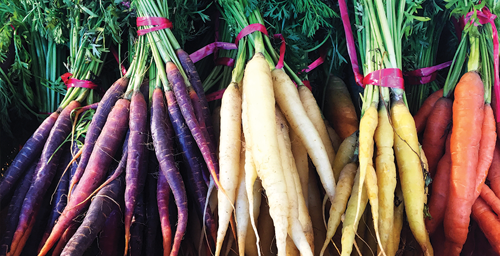
1. Choosing Your Carrot Variety
When it comes to growing carrots, before you even get your hands dirty, you're going to want to have a handle on what it is you're planting. Carrots come in a rainbow of varieties, from the classic orange to the exotic purple (yes, purple carrots really exist!). There's short and stout baby carrots, long & slender maincrop carrots, and even round carrots that look like radishes if you can imagine that. Every variety has its own unique taste and texture, so try them all and see which ones tickle your fancy. Here are some popular favorites to give you an idea!
-
Nantes Carrots: Sweet, crunchy, with a very cylindrical medium-length taproot and a blunt end. They're super easy to grow and don't require too much in the way of maintenance. They can even grow in heavy soils like clay!
-
Scarlet Nantes Carrots: A subtype of the Nantes variety, these are known for their more broad shoulders at the top and are also quite easy to grow in the garden.
-
Napoli Carrots: A favorite among gardeners for both their adaptability and ease of growth.
-
Bolero Carrots: Known for their robust growth and delicious flavor.
-
Romance Carrots: Loved by many for its sweet taste and easy-to-grow nature.

2. Picking the Perfect Spot for Carrots to Grow
Carrots are sun-lovin' veggies, so find a place in your garden you know gets plenty of light. They are not fans of rocky soil – it's like trying to sleep on a bed of pebbles – not comfy! So...do make sure your soil is loose, well-drained, and free of pesky stones.
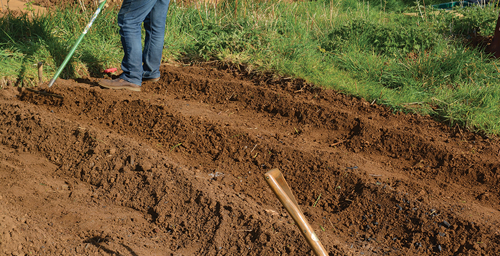
3. Preparing the Soil
Now that you've picked out that absolutely perfect sunny spot, the time has come to prepare the soil. Carrots prefer a well-draining soil that's also rich in organic matter. So, get your hands on some compost (or well-rotted manure) and mix it into the top 6 to 8 inches of soil creating a nutrient-rich environment.
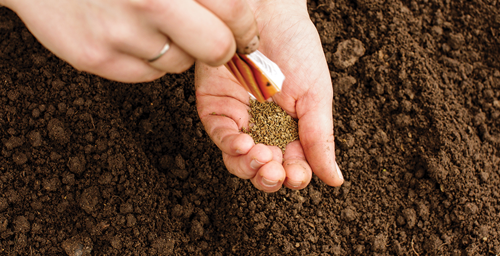
4. Planting Your Carrots
Carrot seeds are tiny as a whisper, so handle with care. Sow them about a quarter-inch deep and an inch apart.
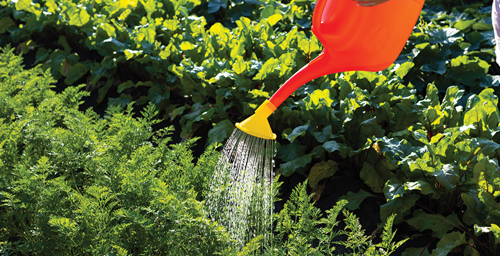
5. Watering Your Carrots
After you've planted your carrot seeds, keep those babies hydrated! The aren't too tricky to grow but there's a few things you'll want to keep in mind. Keep the soil moist but not waterlogged. Remember, carrots are like Goldilocks, they want conditions that are just right. Too dry, and they won't germinate. Too wet, and they'll rot.
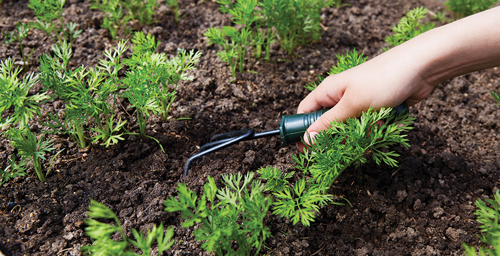
6. Ensure Carrots get some of that TLC
Carrots require some TLC – tender, loving, care. Keep the soil moist, weed those beauties' regularly, and be on the lookout for pests.
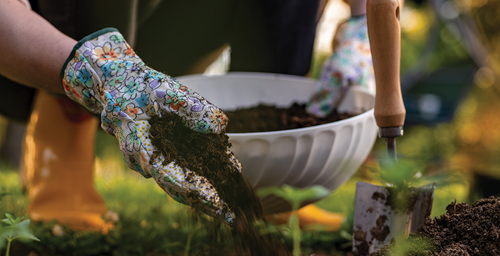
7. Fertilizing Your Carrots
A little bit of compost can definitely go a long ways in helping your carrots grow. Careful not to overdo it! Too much fertilizer can lead to lots of unwanted leafy growth on top, and not a whole heck of a lot of carrot growth underneath!
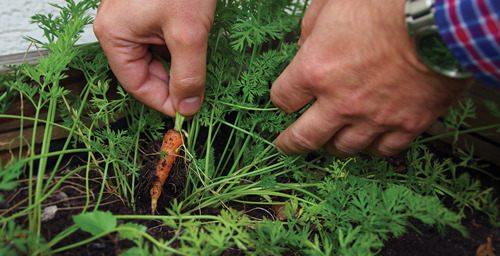
8. Thinning Your Carrots
Somewhere around 3 weeks or so after planting, you'll need to thin the carrots. Removing some of the plants to gives the remaining ones even more space to grow. Leave about an inch of space or so between each of the carrots.

9. Harvesting Your Carrots
When your carrots have grown to full-fledged roots, it's time for the harvest! Once harvested, store your carrots in a cool, dry place.

10. Storing Your Carrots
Storing your carrots properly to keep them fresh for as long as possible:
- Remove the tops
- Wash off any dirt
- Store them in a cool, dry place.
If stored properly, your carrots can last as long as several months!

11. Enjoying Your Carrots
And finally we get to the best part about why we're growing carrots – to eat them of course! From a crunchy raw snack to a key ingredient in soups and stews, carrots are just about as versatile as they come. So put those homegrown carrots to good use!
Recommended Items:
| Compost | R&M Organic Premium Organic Compost |
| Garden Hoe: | Corona GT Extended Reach Hoe and Cultivator |
| Watering Can: | Chapin 2-Gallon Tru-Stream Outdoor and Indoor Watering Can with Removable Nozzle |
| Garden Fork | Fiskars Ergo D-Handle Steel Garden Fork |
| Garden Gloves | Nimalpal 6 Pairs Gardening Gloves |
| Garden Trowel: | Edward Tools Garden Trowel |
| Fertilizer | Miracle-Grow Water Soluble All Purpose Plant Food |
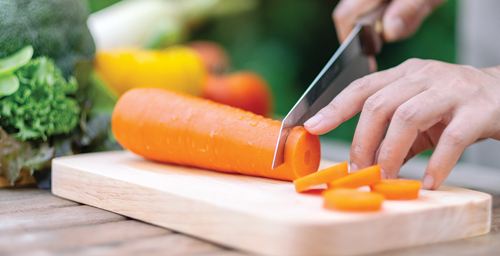
Using Carrots in the Kitchen
We've picked out some of our favorite and most delicious carrot recipes right here on vivafreshfood to inspire you! We hope you love them as much as we do!
-
Chicken Pot Pie: A warm, and oh-so comforting chicken pot pie with carrots for added flavor, of course!.
-
Shredded Carrot Salad: A simple (and refreshing) salad just bursting with shredded carrots and parsley, dressed with a tangy lemon, olive oil, mustard, and honey dressing.
-
Carrot Cake: An all-timer dessert recipe classic featuring the sweet and earthy flavor of carrots.
-
Healthy Heart Breakfast Muffins: A nutritious start to your day with these muffins packed with not only with carrots, banana, zucchini, and a mix of oats, coconut, pecans, and cherries.
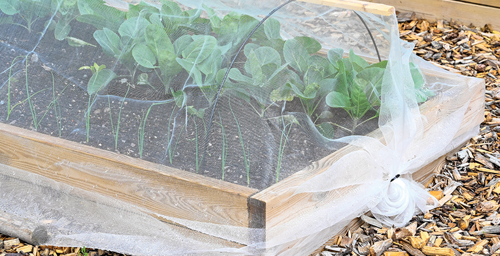
Dealing with Common Pests/Diseases
Ah, pests, the ever uninvited guests at the garden party. From carrot flies to root-knot nematodes, these annoying little critters can wreak total havoc on your carrot crop. But hey, don't let them bug you too much, with a bit of vigilance (and the right techniques), you can keep these pesky pests at bay.
Use floating row covers to protect your carrots from pests. These covers are like a shield, keeping the bugs out while still letting light and water in. It's maybe the most simple and effective ways you can protect your carrots.
And then there's the diseases. Carrots can be susceptible to a variety of diseases, most commonly leaf blight and root rot. To prevent these diseases, just be sure your carrots have plenty of room to grow and be be super careful that they're not sitting in waterlogged soil.

Harvest Carrots
So how does one know when your carrots are ready to harvest? Carrots are ready when they're around ½ to ¾ inch in diameter at the soil surface. But the best way to know for sure? Simply pull one up and take a look....if it's the right size and color, it's ready to go!
Other Frequently Asked Questions
Q: How do I grow carrots in the garden?
To grow carrots in the garden, start by preparing a well-drained bed (raised bed is optional) where the soil both loose and free of rocks. Sow the carrot seeds approximately one inch deep and one inch apart in rows. Keep the soil consistently moist, and thin out the seedlings as they grow to give them enough space to develop to their maximum potential.
Q: Can I grow carrots in containers?
Yes you most certainly can grow carrots in containers! Pick out a container that's at least 12 inches deep to allow the roots enough space to grow. Fill the container with a well-draining potting mix, sow the seeds about inch deep, and keep the soil moist. Place the container in a sunny spot and thin out the seedlings as needed.
Q: When are carrots ready to harvest?
Carrots are usually ready to harvest about 60-80 days after sowing the seeds. You can check by gently pulling up the top of a carrot to see how large it has grown. If the carrot is around 1/2 inch in diameter and 6-8 inches long, it is likely ready to be harvested.
Q: How do I store carrots?
After harvesting, remove the carrot tops and store the carrots in a cool, dark place. You can store them in the refrigerator wrapped in a damp paper towel to keep them fresh for several weeks.
Q: What type of soil do carrots need?
Carrots grow best in loose, well-draining soil that is free of rocks and clumps. If you have heavy clay soil, consider amending it with organic matter such as compost to improve drainage.
Q: How deep should I plant carrots?
When planting carrots, sow the seeds about inch deep. This allows the tiny seeds to have enough contact with the soil for proper germination while still being close to the surface for sprouting.
Q: How far apart should I plant carrot seeds?
Plant carrot seeds about one inch apart in rows.
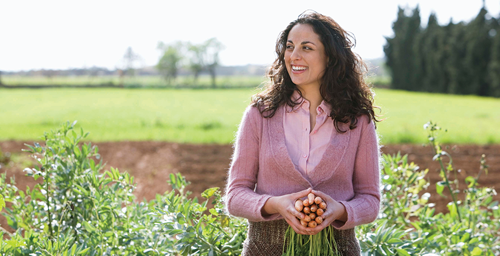
Well, there you have it, folks. A start-to-finish guide on growing carrots. It's not rocket science, but it does require a bit of patience and a lot of love.
Remember, as the old saying goes, "The best time to plant a tree was 20 years ago. The second best time is now." The same goes for carrots. Happy gardening!
If you found this article helpful, we'd just love it if you gave us a quick follow on social media below (including our TikTok which has been blowing up and Facebook) or sign up for our wonderful newsletter (absolutely free) so you don't miss out on any similar gardening guides or delicious recipes we are currently cooking up!
Last but not least, we'd love to hear about your own experiences growing carrots in the comments below! Share your anecdotes and hot tips with us and readers just like yourself!



